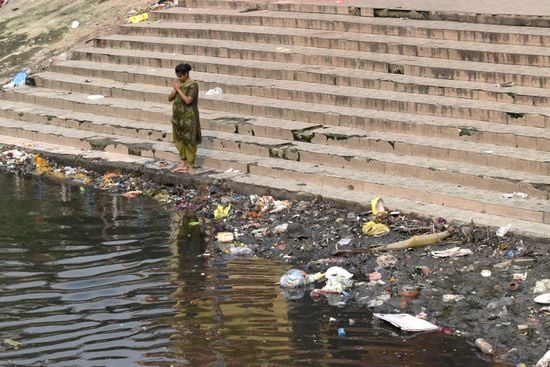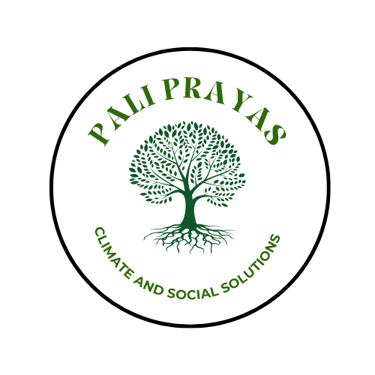Despite ₹33,000 Crore Spent, India’s Rivers Remain Polluted: Aligning Cultural Practices can be the Key to Cleaner Waters


India’s rivers, particularly the Ganga, have been sacred in the country’s cultural and spiritual life for centuries. The Ganga is not just a river but a symbol of purity and a source of life, deeply revered in Hinduism. It is personified as a goddess and is believed to cleanse sins and purify the soul. Millions take holy dips, perform rituals, and offer prayers on its banks. However, this reverence has not translated into efforts to protect and preserve the river’s health. Despite being worshipped, the Ganga and many other rivers in India are now among the most polluted water bodies in the world.
Massive Investments, Limited Results
The Indian government has invested heavily to clean the Ganga and other polluted rivers. Since 2014, some ₹13,000 crore has been allocated and used under the Namami Gange Programme, bringing the total expenditure to ₹33,000 crore. Despite this enormous investment, the situation on the ground remains dire.
The Department of Water Resources, River Development & Ganga Rejuvenation, under the Ministry of Jal Shakti, oversees these efforts. The department has a complex structure, comprising multiple wings, attached offices, subordinate offices, and autonomous bodies, all dedicated to managing and conserving India’s water resources. Despite this extensive administrative framework, the results have been far from satisfactory.
A 2019 assessment by the Quality Council of India revealed that over 70% of towns along the Ganga were still discharging untreated waste directly into the river due to a lack of adequate waste treatment facilities. This points to a significant gap between policy intentions and on-ground realities, highlighting the challenges in implementing large-scale environmental projects effectively.
Widespread Pollution Across the Country
The problem is not limited to the Ganga. Across India, more than 38,000 million liters of untreated wastewater flow into rivers every day because of insufficient sewage treatment plants and poor waste disposal mechanisms. A study by the International Institute for Applied Systems Analysis (IIASA) found that India accounts for 17% of the world’s scattered municipal waste. The Central Pollution Control Board (CPCB) reported that in 2022, nearly half of the rivers it monitored (279 out of 603) were polluted.
This widespread pollution has severe environmental and economic consequences. The World Bank estimates that the health costs due to water pollution in India are around 3% of the nation’s GDP, amounting to nearly $6.7-8.7 billion annually. This economic burden highlights the urgent need for effective water management and pollution control measures, not just for environmental sustainability but also for the country’s economic well-being and public health
The Paradox of Worship and Neglect
The Ganga’s plight reflects a broader societal paradox: while millions worship the river, few take responsibility for its cleanliness. Religious rituals such as immersing idols, offering plastic-wrapped items, and other activities add to the pollution. During festivals like Kumbh Mela, millions gather to take a holy dip, believing it will cleanse their sins. Yet, many of these same people contribute to the river’s degradation by dumping waste, including plastics and other non-biodegradable materials, into its waters. This disconnect between spiritual reverence and environmental responsibility is a major obstacle to effective river conservation.
The Way Forward: Bridging the Gap Between Worship and Action
Addressing this crisis requires a multi-pronged approach. While government initiatives are crucial, they must be complemented by a strong sense of community responsibility and public awareness. People need to understand that preserving the Ganga and other rivers is not just the government’s job but a shared responsibility.
Active community involvement is vital for the conservation of India’s rivers. When local communities are engaged in the efforts to protect their water bodies, they develop a sense of ownership and responsibility. Education and awareness campaigns can foster this connection, empowering individuals to take action. Initiatives such as community-led clean-up drives and pollution monitoring can significantly contribute to maintaining the health of rivers. By bringing people together and encouraging grassroots participation, we can create a culture of stewardship that emphasizes the importance of preserving our natural resources.
Improving waste management and sewage treatment infrastructure across the country is also crucial for reducing river pollution. The current state of many facilities is inadequate, resulting in untreated wastewater flowing into rivers. Building more sewage treatment plants and ensuring they are well-maintained are essential steps toward mitigating this issue. Additionally, it is important to hold industries and municipalities accountable for their pollution. Stricter regulations should be enforced, with heavy fines for violators and incentives for adopting cleaner technologies. By prioritizing compliance with environmental norms, we can effectively tackle industrial pollution and safeguard our water bodies.
Aligning cultural and religious practices with conservation efforts is essential for effectively cleaning the Ganga and other rivers. The Ganga holds immense spiritual significance, with millions of devotees visiting its banks, believing in its purifying properties. However, traditional practices such as idol immersion and the use of plastic-wrapped offerings contribute significantly to pollution. To address this, it is crucial to promote eco-friendly alternatives, such as biodegradable materials for rituals, and establish designated immersion areas away from the main river.
Religious leaders and community influencers can play a pivotal role in advocating for these changes, bridging the gap between faith and environmental responsibility. The government should collaborate with religious organizations to conduct awareness campaigns during major festivals, like Kumbh Mela, when large crowds gather along the Ganga. These initiatives can educate people about the impact of their actions on the river’s health and encourage them to adopt sustainable practices. By integrating these efforts into religious traditions, we can foster a shared responsibility for preserving the sanctity of the Ganga. This alignment of cultural reverence with practical conservation measures is essential for achieving long-term success in cleaning and rejuvenating our rivers, ensuring they remain pure and life-giving for generations to come.
What now?
The journey to restore India’s rivers to their former glory is challenging but not impossible. It requires a combined effort from the government, industries, communities, and individuals. We need to move beyond just worshipping our rivers to actively taking care of them. This involves changing the way we think and act towards our water bodies. Only then can we hope to see a cleaner, healthier Ganga and other rivers, preserving them for future generations and ensuring they remain a source of life and purity, not pollution and despair?
About the Author


Ravi has been serving as an Assistant Private Secretary (APS) to a seven-term Member of Parliament and former Union Minister for the past decade. With extensive experience in parliamentary affairs, he has developed expertise in a wide range of subjects, including policy analysis, legislative research, and constituency management. His role involves providing data-backed insights and strategic advice on various issues, enabling effective decision-making and parliamentary interventions.
